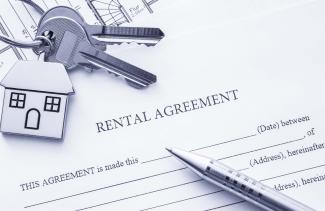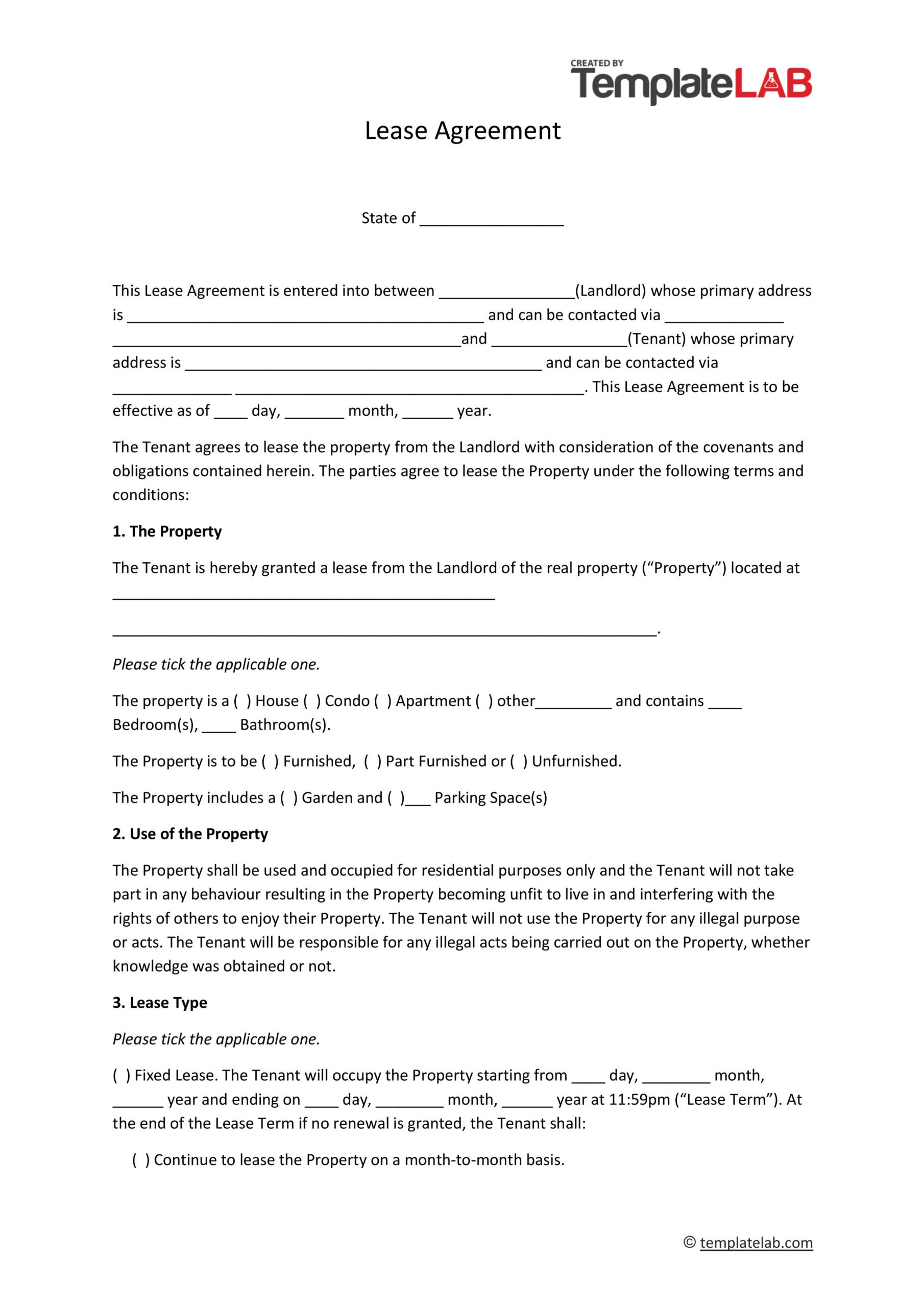lease agreement
Sealing the Deal: Navigating the Lease Signing Process

Sealing the Deal: Navigating the Lease Signing Process
Lease signing is the final step in securing a rental property, marking the official agreement between tenants and landlords. This crucial phase requires attention to detail and a clear understanding of the terms outlined in the lease agreement. In this article, we explore the lease signing process, offering insights into what tenants should expect and how to ensure a smooth and informed transaction.
Understanding the Lease Agreement: The Foundation of the Process
Before delving into the lease signing process, tenants must thoroughly understand the lease agreement. This foundational document outlines the terms and conditions of the rental arrangement, including rent amount, duration of the lease, responsibilities of both parties, and any specific rules or restrictions. Tenants should carefully review every clause to ensure they are comfortable with the terms before proceeding.
Negotiating Terms and Clarifications: Open Communication Matters
In some cases, tenants may wish to negotiate certain terms of the lease agreement before signing. This could involve discussing the rent amount, requesting specific provisions, or seeking clarification on certain clauses. Open communication with the landlord during this stage is crucial. Both parties should express their concerns, negotiate in good faith, and ensure mutual understanding before moving forward.
Setting Up a Lease Signing Appointment: Coordination is Key
Once both parties are satisfied with the terms, the next step is setting up a lease signing appointment. This is typically a scheduled meeting where tenants, landlords, or their representatives come together to formally sign the lease agreement. Coordination is key during this stage to ensure all parties can attend the appointment and complete the necessary paperwork.
Reviewing the Lease with Diligence: Avoiding Surprises
During the lease signing appointment, tenants should take the time to review the document with diligence. It’s essential to go through each section, paying attention to details such as lease duration, rent escalation clauses, security deposit terms, and any special provisions. Avoiding surprises later on requires a thorough understanding of the lease at this critical juncture.
Signing the Lease: Putting Pen to Paper
The actual act of signing the lease is a significant step. Both tenants and landlords will need to put pen to paper to officially indicate their agreement with the terms outlined in the lease agreement. This step signals the commencement of the lease period and the official start of the landlord-tenant relationship.
Providing Required Documentation: Ensuring Compliance
In addition to signing the lease, tenants may be required to provide certain documentation during the lease signing process. This could include identification, proof of income, references, or other documents requested by the landlord. Ensuring compliance with these requirements is essential to finalize the lease and secure the rental property.
Payment of Initial Costs: Budgeting for Upfront Expenses
Alongside the lease signing, tenants are often required to make initial payments, including the first month’s rent and a security deposit. Budgeting for these upfront expenses is crucial to avoid delays in the lease signing process. Tenants should be prepared to provide these payments
Efficient Rental Property Management for Success

Efficient Rental Property Management for Success
Successful rental property management goes beyond collecting rent; it involves comprehensive strategies to ensure the property’s well-being, tenant satisfaction, and financial success. Navigating the intricacies of property management requires a multifaceted approach that balances various responsibilities.
Clear Communication with Tenants
One of the cornerstones of efficient rental property management is clear communication with tenants. Establishing open lines of communication helps address concerns promptly, fostering a positive relationship between landlords and tenants. Regular communication also ensures that tenants are aware of their responsibilities and the property’s guidelines.
Thorough Tenant Screening Process
Efficient property management begins with a rigorous tenant screening process. This involves thorough background checks, assessing financial stability, and checking rental histories. A meticulous screening process helps ensure that tenants are reliable, responsible, and more likely to adhere to the terms of the lease agreement.
Effective Lease Agreement Management
Managing lease agreements effectively is crucial for maintaining a well-functioning rental property. This includes clearly outlining terms, setting expectations, and addressing any necessary legal considerations. Regularly reviewing and updating lease agreements as needed contributes to a smooth and compliant tenant-landlord relationship.
Proactive Property Maintenance
Proactive property maintenance is key to preserving the property’s value and ensuring tenant satisfaction. Regular inspections, prompt repairs, and addressing maintenance concerns swiftly contribute to a well-maintained property. A well-maintained property not only attracts quality tenants but also minimizes issues that can escalate over time.
Financial Management and Budgeting
Sound financial management is at the core of successful property management. This involves setting realistic rental prices, budgeting for maintenance and repairs, and diligently tracking income and expenses. Strategic financial planning ensures the property remains profitable while providing value to tenants.
Utilization of Technology in Property Management
In the digital age, leveraging technology is essential for efficient property management. Property management software can streamline tasks such as rent collection, lease tracking, and communication. Online platforms also provide convenient tools for property owners to manage various aspects of their rental properties more effectively.
Tenant Retention Strategies
Retaining quality tenants is a cost-effective strategy in property management. Establishing a positive living environment, addressing tenant concerns promptly, and offering incentives for lease renewals contribute to tenant satisfaction. Satisfied tenants are more likely to stay longer, reducing turnover costs and ensuring a steady income stream.
Legal Compliance and Stay Informed
Adhering to legal requirements is non-negotiable in property management. Property managers must stay informed about local rental laws, eviction procedures, and fair housing regulations. Compliance not only avoids legal issues but also fosters a trustworthy reputation in the rental market.
Emergency Preparedness and Response
Being prepared for emergencies is a vital aspect of property management. Property managers should have contingency plans for unforeseen events, such as natural disasters or urgent repairs. This preparedness ensures the safety of tenants, protects the property, and demonstrates responsible management.
Continual Education and Professional Development
The field of property management is dynamic, with laws, technologies, and best practices evolving. Property managers should engage in continual education and professional development to stay
Understanding Your Rights as a Tenant

Understanding Your Rights as a Tenant
As a tenant, it’s crucial to be well-informed about your rights to ensure a fair and secure rental experience. Here’s a comprehensive guide that delves into various aspects of tenant rights, shedding light on key considerations.
Lease Agreement Basics
The foundation of your tenancy lies in the lease agreement. This legal document outlines the terms and conditions of your stay. It’s essential to thoroughly review and understand every detail before signing. Pay close attention to clauses regarding rent, maintenance responsibilities, and any limitations imposed by the landlord.
Rent Payment Rights
Your lease agreement will specify the due date and the amount of rent you’re obligated to pay. Tenant rights typically protect you from arbitrary rent increases during the lease term. If such changes are proposed, they often require sufficient notice, allowing you to plan accordingly. It’s crucial to understand your rights to avoid any potential disputes.
Repairs and Maintenance
One of the fundamental rights as a tenant is the right to a habitable living space. This implies that your landlord is responsible for ensuring the property is in good repair. In case of maintenance issues, promptly inform your landlord, preferably in writing, to document the request. If the landlord fails to address the problem, you may have legal recourse to demand repairs.
Privacy Rights
Tenants have a right to privacy within their rented space. Landlords should provide notice before entering the property for non-emergency reasons, allowing you sufficient time to prepare. Understanding these rights helps maintain a respectful and comfortable living environment.
Eviction Protections
Tenant rights extend to protection against unjust eviction. In most jurisdictions, landlords must have valid reasons, such as non-payment of rent or violation of lease terms, to initiate eviction proceedings. It’s essential to be aware of your rights in the event of an eviction notice and to seek legal advice if needed.
Security Deposit Guidelines
Landlords often require a security deposit to cover potential damages or unpaid rent. Tenant rights include a transparent process for handling and refunding this deposit. Make sure to document the property’s condition upon move-in and communicate any concerns to your landlord to avoid disputes during the deposit return process.
Discrimination Protections
Tenant rights also encompass protection against discrimination. Landlords cannot deny housing based on factors such as race, gender, religion, or disability. Familiarize yourself with anti-discrimination laws in your area to ensure you can recognize and address any potential violations.
Lease Renewal Terms
Understanding lease renewal terms is crucial for a smooth transition between rental periods. Some leases may include automatic renewal clauses, while others require explicit agreement from both parties. Be aware of the renewal process outlined in your lease to avoid any misunderstandings.
Resources for Tenant Advocacy
Empower yourself by exploring resources that advocate for tenant rights. Many organizations provide valuable information and support for tenants facing legal challenges or seeking advice. Familiarize yourself with these resources to access assistance when needed.
Conclusion
Being aware of your tenant rights is the first step
Navigating the Essentials: Effective Lease Agreements Unveiled

Understanding the Foundation: The Importance of Effective Lease Agreements
Lease agreements form the bedrock of a landlord-tenant relationship, outlining the terms and conditions that govern the rental arrangement. In the complex world of real estate, having a comprehensive and effective lease agreement is crucial for both landlords and tenants to ensure a smooth and transparent living arrangement.
Clear Terms for Clarity in Expectations
The first pillar of an effective lease agreement is clarity. It’s essential to define terms and conditions in a language that is easily understandable to both parties involved. Ambiguity can lead to misunderstandings and disputes down the line, so a clear and concise document is paramount.
Legal Protection for Landlords and Tenants
A robust lease agreement provides legal protection for both landlords and tenants. It serves as a legally binding contract that outlines the rights, responsibilities, and obligations of each party. This legal foundation ensures that both parties are held accountable and protected under the law.
Financial Matters: Rent, Deposits, and Fees
One of the crucial aspects covered in a lease agreement is the financial arrangement. This includes the agreed-upon rent, security deposits, and any other fees involved. Clearly outlining these financial matters in the lease agreement helps prevent disputes and ensures that both parties are on the same page regarding payment expectations.
Duration and Renewal Terms for Stability
Lease agreements specify the duration of the tenancy, whether it’s a fixed-term lease or a month-to-month arrangement. Additionally, renewal terms and conditions are outlined to provide stability for both landlords and tenants. Having a well-defined lease duration ensures that both parties can plan for the future with confidence.
Property Maintenance and Responsibilities
A comprehensive lease agreement addresses property maintenance and outlines the responsibilities of both the landlord and the tenant. This includes routine maintenance tasks, repairs, and guidelines for keeping the property in good condition. Clear communication regarding these responsibilities helps maintain a harmonious living environment.
House Rules: Community Guidelines and Restrictions
To foster a positive living environment, lease agreements often include house rules. These guidelines may cover issues such as noise restrictions, pet policies, and other community-related matters. By setting clear expectations in the lease agreement, landlords can maintain a sense of order and ensure the well-being of all residents.
Termination and Eviction Protocols
In the unfortunate event that a tenancy needs to be terminated, an effective lease agreement outlines the procedures for eviction and termination. This includes the conditions under which the lease can be terminated and the steps that must be followed. Having these protocols in place protects the interests of both landlords and tenants.
Flexibility in Lease Modifications
A well-crafted lease agreement allows for flexibility in certain situations. Life is dynamic, and circumstances may change for both landlords and tenants. Including provisions for lease modifications or early termination under specific conditions allows for adaptability and understanding in unforeseen circumstances.
Communication Channels: Resolving Disputes Amicably
Lease agreements can also include provisions for dispute resolution. Establishing communication channels and methods for resolving conflicts amicably can help
Navigating Rentals: Essential Tips for a Seamless Experience

Navigating Rentals: Essential Tips for a Seamless Experience
Embarking on the journey of renting a new space comes with its unique challenges and excitement. To ensure a seamless experience, consider these essential renting tips that cover everything from preparation to settling into your new home.
Preparation is Key: Begin with a Checklist
Before diving into the rental process, start with thorough preparation. Develop a checklist that includes your budget, must-have features, and preferred locations. This checklist serves as a guide, helping you stay organized and focused throughout the renting journey.
Know Your Budget: Financial Planning for Renting Success
Understanding your budget is a fundamental step in the renting process. Calculate your monthly income, factor in other expenses, and determine a realistic budget for rent. Knowing your financial boundaries ensures that you explore rental options that align with your economic capacity.
Research the Neighborhood: Beyond Four Walls
The neighborhood you choose significantly impacts your living experience. Research potential neighborhoods, considering factors like safety, proximity to work or school, amenities, and community atmosphere. A well-informed decision about the neighborhood contributes to a satisfying rental experience.
Understand the Lease Agreement: Read Before You Sign
Once you’ve found a suitable rental property, it’s crucial to thoroughly understand the lease agreement. Read the terms and conditions carefully, paying attention to rental duration, payment schedules, maintenance responsibilities, and any clauses related to terminating the lease. A clear understanding prevents misunderstandings in the future.
Inspect the Property: Look Beyond Aesthetics
Before committing to a rental, conduct a thorough inspection of the property. Look beyond the aesthetics and check for any signs of damage or issues that may need attention. Document your findings and communicate them with the landlord to ensure necessary repairs are addressed before move-in.
Know Your Rights and Responsibilities: Empower Yourself
Understanding your rights and responsibilities as a tenant empowers you in the renting process. Familiarize yourself with tenant laws and regulations in your area. Knowing your rights ensures that you are treated fairly, and understanding your responsibilities contributes to harmonious landlord-tenant relationships.
Communicate Effectively: Open Lines of Communication
Effective communication is key in any rental arrangement. Establish open lines of communication with your landlord or property manager. Promptly report any maintenance issues, seek clarification when needed, and keep your landlord informed of any changes in your circumstances that may affect the rental agreement.
Personalize Your Space: Create a Home
Once you’ve moved in, take the time to personalize your space. Add personal touches, decorations, and organize your belongings to create a homey atmosphere. Making the space your own enhances your overall satisfaction with the rental experience.
Build a Good Relationship with Your Landlord: Mutual Respect
A positive relationship with your landlord contributes to a stress-free renting experience. Be respectful, fulfill your responsibilities as a tenant, and address any concerns or issues promptly. Building a good relationship fosters a cooperative living arrangement.
Plan for the Future: Consider Long-Term Goals
As you settle into your rental, consider your long-term goals. Whether it’s renewing the lease, exploring
Streamlined Living: Mastering the Renting Process

Streamlined Living: Mastering the Renting Process
Embarking on the journey of finding and securing a rental involves a series of steps and considerations. Mastering the renting process ensures a smooth transition to your new living space. Let’s explore the key elements and tips to streamline the renting experience.
Understanding Your Needs: The Foundation of Your Search
Before diving into the renting process, take the time to understand your needs and preferences. Consider factors such as the desired location, budget, number of bedrooms, and essential amenities. This foundational step shapes your search and narrows down the options to properties that align with your lifestyle.
Researching the Rental Market: Knowledge is Power
Knowledge of the rental market is a powerful tool in the renting process. Research current rental trends, average prices in your desired area, and the availability of different property types. This information empowers you to make informed decisions and ensures that you are well-prepared for negotiations.
Setting a Realistic Budget: Balancing Aspirations and Affordability
One of the crucial aspects of mastering the renting process is setting a realistic budget. Analyze your monthly income, consider additional expenses, and determine the amount you can comfortably allocate to rent. Balancing your aspirations with affordability ensures that you explore options within your financial means.
Utilizing Online Platforms: The Convenience of Digital Search
Online platforms have revolutionized the renting process, offering a convenient and efficient way to explore available properties. Utilize online platforms to browse listings, apply filters based on your criteria, and even take virtual tours of potential homes. This digital approach streamlines the initial phase of your renting journey.
Property Visits: Seeing Beyond the Listing
While online platforms provide a comprehensive overview, visiting properties in person is a critical step. Schedule property visits to see beyond the listing photos. Evaluate the neighborhood, assess the condition of the property, and envision yourself living in the space. Property visits provide firsthand insights that aid in decision-making.
Application and Documentation: Presenting Yourself Effectively
Once you’ve found the ideal rental, the application and documentation process begins. Prepare a rental resume that includes your rental history, references, and proof of income. Completing the application accurately and providing necessary documentation enhances your credibility as a prospective tenant.
Negotiation Strategies: Advocating for Favorable Terms
Negotiation can be a part of the renting process, especially when it comes to lease terms or rental rates. Craft negotiation strategies that advocate for favorable terms, such as a longer lease duration or flexibility in the move-in date. Effective negotiation ensures that the rental agreement aligns with your preferences.
Understanding the Lease Agreement: Clarity is Key
Before finalizing the renting process, thoroughly understand the terms of the lease agreement. Pay attention to clauses related to rent increases, maintenance responsibilities, and conditions for lease termination. Clarity on these terms prevents misunderstandings and sets the foundation for a positive landlord-tenant relationship.
Securing Your Rental: Finalizing the Process
Once the negotiations are complete, and the lease agreement is understood, the final step is securing your rental. This involves
